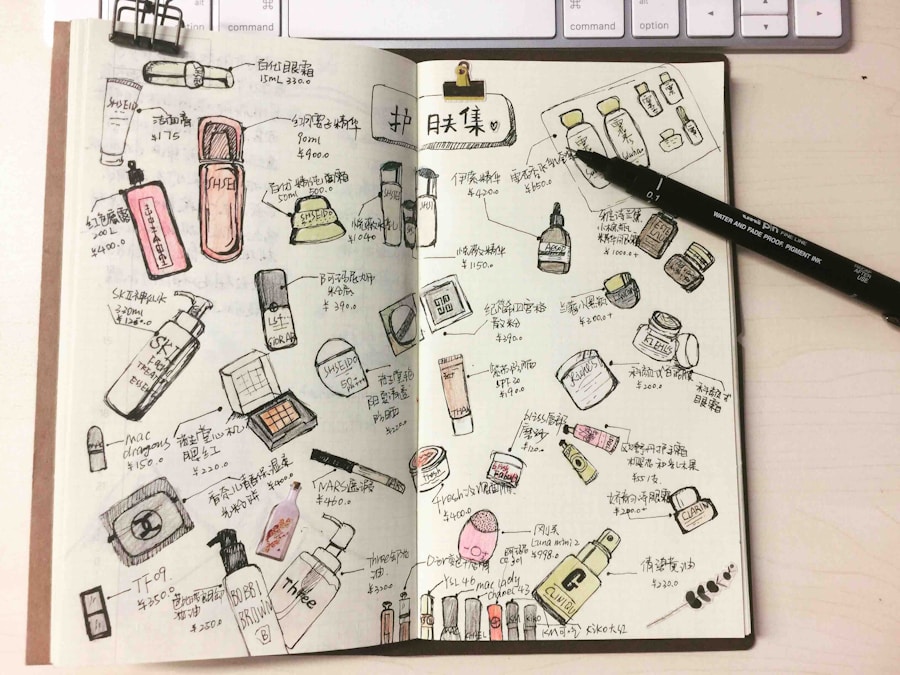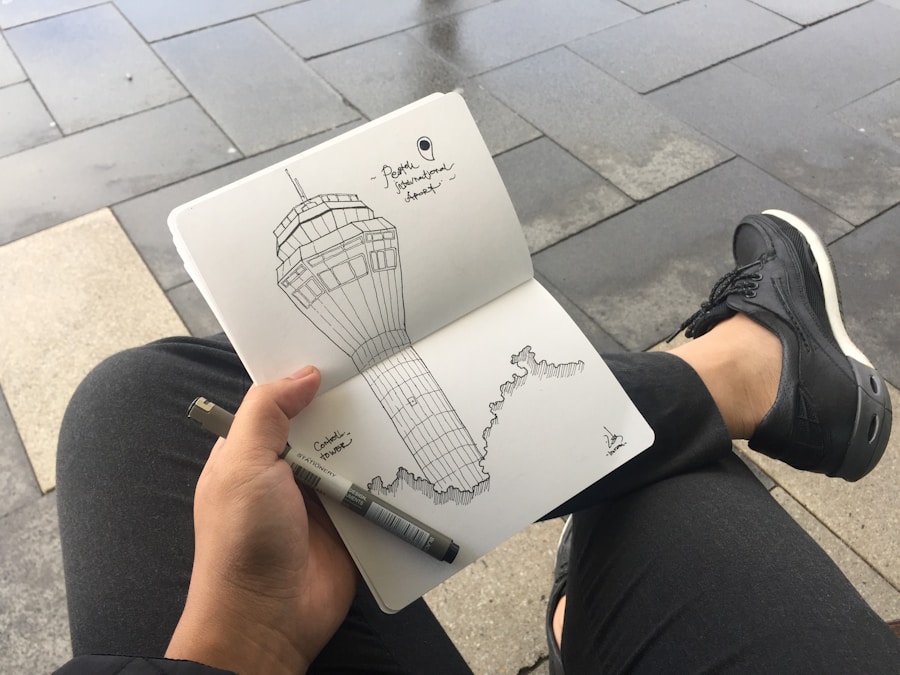Establishing a budget is the cornerstone of any successful travel plan. It serves as a financial blueprint that guides your decisions, from choosing a destination to selecting accommodations and activities. To begin, assess your overall financial situation, including your income, savings, and any existing expenses.
This will help you determine how much you can realistically allocate for your trip without compromising your financial stability. Consider creating a detailed budget that includes categories such as transportation, lodging, food, activities, and souvenirs. This breakdown will not only help you keep track of your spending but also allow you to identify areas where you can cut costs.
Once you have a clear budget in mind, the next step is to explore ways to save money for your trip. This could involve setting up a dedicated travel fund where you contribute a specific amount each month. You might also consider reducing discretionary spending in other areas of your life, such as dining out or entertainment.
Additionally, look for opportunities to earn extra income, whether through freelance work, selling unused items, or taking on a part-time job. Every little bit adds up and can significantly enhance your travel budget. Moreover, utilizing apps and tools designed for budgeting can help you stay on track and visualize your savings progress.
Key Takeaways
- Setting a realistic budget and saving money for your trip is essential for a stress-free travel experience.
- Researching destinations and accommodations in advance can help you find the best deals and make informed decisions.
- Planning your itinerary and activities ahead of time can help you make the most of your trip and avoid last-minute stress.
- Booking flights and transportation early can save you money and ensure you have the best options available.
- Securing travel insurance and necessary documents is crucial for your safety and peace of mind while traveling.
Researching Destinations and Accommodations
The process of selecting a destination is both exciting and daunting, given the plethora of options available worldwide. Start by considering what type of experience you seek—whether it’s a cultural immersion in a bustling city, a serene retreat in nature, or an adventurous getaway filled with outdoor activities. Researching various destinations involves looking into factors such as climate, local customs, safety, and accessibility.
Websites like TripAdvisor and Lonely Planet provide valuable insights from fellow travelers that can help you gauge the pros and cons of each location. Once you have narrowed down your destination choices, the next step is to explore accommodation options. The type of lodging you choose can greatly influence your travel experience.
From luxury hotels to budget hostels and vacation rentals, the variety is vast. Consider what amenities are important to you—such as Wi-Fi, breakfast options, or proximity to attractions—and weigh these against your budget. Websites like Airbnb and Booking.com allow you to filter accommodations based on your preferences and read reviews from previous guests.
Additionally, consider the benefits of staying in less touristy areas; this often leads to more authentic experiences and can be more economical.
Planning Your Itinerary and Activities

Creating a well-structured itinerary is essential for maximizing your travel experience while ensuring that you make the most of your time at your chosen destination. Start by listing the key attractions and activities that interest you. This could include historical sites, museums, natural wonders, or local events.
Once you have a comprehensive list, prioritize these activities based on their significance to you and the time required to visit each one. It’s also wise to consider the geographical layout of the area; grouping nearby attractions can save time and reduce travel costs. While it’s important to have a plan in place, it’s equally crucial to allow for spontaneity during your travels.
Some of the most memorable experiences often arise from unplanned adventures or recommendations from locals. Therefore, when drafting your itinerary, leave some open slots for exploration or relaxation. Additionally, consider incorporating downtime into your schedule; this will help prevent burnout and allow you to fully appreciate the moments you do have planned.
Balancing structure with flexibility will enhance your overall travel experience.
Booking Flights and Transportation
Securing flights is often one of the most significant expenses associated with travel, making it essential to approach this step with careful consideration. Start by comparing prices across various airlines and booking platforms. Websites like Skyscanner and Google Flights allow you to track fare fluctuations and set alerts for price drops on specific routes.
Flexibility with your travel dates can also yield substantial savings; flying mid-week or during off-peak seasons often results in lower fares. Once you arrive at your destination, planning your transportation options is equally important. Depending on where you’re traveling, public transportation may be an efficient and cost-effective way to navigate the area.
Research local transit systems—such as buses, trains, or subways—and familiarize yourself with their schedules and routes. Alternatively, consider renting a car if you plan to explore rural areas or regions with limited public transport options. However, be mindful of parking fees and fuel costs when budgeting for this option.
Additionally, rideshare services like Uber or Lyft can provide convenient transportation without the hassle of navigating unfamiliar roads.
Securing Travel Insurance and Necessary Documents
Travel insurance is an often-overlooked aspect of trip planning that can provide peace of mind in case of unexpected events such as cancellations, medical emergencies, or lost belongings. When selecting a travel insurance policy, carefully review the coverage options available to ensure they align with your needs.
Websites like InsureMyTrip allow you to compare different policies side by side.
This includes checking the validity of your passport—many countries require that passports be valid for at least six months beyond your planned return date.
If you’re traveling internationally, research visa requirements for your destination; some countries may require visas obtained in advance while others offer visa-on-arrival options. Additionally, keep digital copies of important documents such as passports, insurance policies, and itineraries stored securely online or in an accessible app.
Making Reservations for Tours and Excursions

Once you’ve established your itinerary and identified key activities you’d like to experience, it’s time to make reservations for tours and excursions. Many popular attractions offer guided tours that provide deeper insights into local culture and history; booking these in advance can often save time and guarantee availability during peak seasons. Websites like Viator or GetYourGuide offer a wide range of tours that cater to various interests—from culinary experiences to adventure sports.
When making reservations, consider the timing of each activity in relation to your overall itinerary. For instance, if you’re planning a day trip that requires significant travel time, ensure that it doesn’t conflict with other scheduled activities. Additionally, read reviews from previous participants to gauge the quality of the tour or excursion before committing financially.
Some tours may offer discounts for early bookings or group rates; take advantage of these opportunities when possible.
Packing and Preparing for Your Trip
Packing efficiently is an art form that can significantly enhance your travel experience by minimizing stress upon arrival at your destination. Begin by creating a packing list tailored to the climate and activities planned during your trip. Consider versatile clothing items that can be mixed and matched; this not only saves space but also allows for greater flexibility in outfit choices.
Additionally, pack layers if you’re traveling to regions with fluctuating temperatures; this will help you adapt to changing weather conditions without overpacking. Beyond clothing, don’t forget essential items such as toiletries, medications, chargers for electronic devices, and any necessary travel accessories like power adapters or portable chargers. A well-organized suitcase can make navigating airports and accommodations much smoother.
Consider using packing cubes or compression bags to maximize space and keep items organized within your luggage. Finally, ensure that all important documents are easily accessible during travel; having them on hand will streamline check-in processes at airports or accommodations.
Managing Expectations and Staying Flexible
Traveling often comes with its share of surprises—both delightful and challenging—and managing expectations is key to enjoying the journey regardless of unforeseen circumstances. Understand that not everything will go according to plan; delays in transportation, unexpected weather changes, or fully booked attractions can occur even with meticulous planning. Embracing a mindset of flexibility allows you to adapt to these situations without becoming overwhelmed.
To cultivate this flexibility, approach each day with an open mind and a willingness to explore alternative options if plans change. For instance, if rain disrupts outdoor activities you’ve planned for the day, consider visiting local museums or cafes instead—these spontaneous choices can lead to unique experiences that enrich your trip in unexpected ways. Additionally, engage with locals who may offer insights into hidden gems or alternative attractions that aren’t on typical tourist itineraries; these interactions often lead to memorable moments that define a trip beyond its original scope.
By following these steps—setting a budget, researching destinations, planning itineraries, booking transportation, securing insurance, making reservations for activities, packing wisely, and maintaining flexibility—you can create a comprehensive travel plan that enhances both enjoyment and peace of mind throughout your journey.
If you’re looking to book your dream vacation without stress, you may want to check out this article on the best-kept secrets about travel. It offers valuable insights and tips that can help make your trip planning process smoother and more enjoyable. Whether you’re dreaming of a seaside reset in Laguna Beach or an adventure aboard the Rocky Mountaineer, this article has got you covered with expert advice and recommendations.
FAQs
What are the benefits of booking a vacation without stress?
Booking a vacation without stress can lead to a more enjoyable and relaxing travel experience. It can also help you save time and money by avoiding last-minute decisions and rushed bookings.
How can I plan my dream vacation step by step?
You can plan your dream vacation step by step by first deciding on a destination, setting a budget, researching accommodations and activities, booking flights and accommodations, and creating an itinerary.
What are some tips for reducing stress when booking a vacation?
Some tips for reducing stress when booking a vacation include starting the planning process early, staying organized with a checklist, using reputable travel websites, and considering travel insurance for added peace of mind.
What are some common mistakes to avoid when booking a vacation?
Common mistakes to avoid when booking a vacation include waiting until the last minute to book, not thoroughly researching accommodations and activities, and not considering all potential costs such as transportation and meals.
How can I ensure a smooth travel experience after booking my vacation?
You can ensure a smooth travel experience after booking your vacation by double-checking all reservations, packing strategically, and staying flexible in case of any unexpected changes or delays.



0 Comment